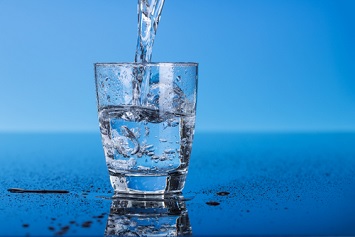On October 23, 2018, President Donald Trump signed the America’s Water Infrastructure Act of 2018 (AWIA). The law established the parameters and federal funding levels for many types of water infrastructure improvement projects, including work by the Army Corps of Engineers to upgrade navigation, expand the ability of FEMA to assist states in flood management, and authorize the Bureau of Indian Affairs to address deferred maintenance of Indian dams and irrigation systems in the United States.

Not least among the AIWA’s provisions is a restructuring of the Drinking Water State Revolving Fund (DWSRF), a program the EPA implements to provide grants and loans to state and local governments, public water systems, and other entities to support a wide range of water infrastructure projects and programs to improve water quality. The AWIA reflects Congress and Trump’s desire to work with local and state governments to slow and eventually stabilize and reverse the alarming deterioration of drinking water storage, treatment, and delivery systems.
The EPA’s Office of Water has provided its regions with a 16-page memo intended to assist both the regions and the states in implementing the 15 changes to the DWSRF made under the AIWA. When seeking financial assistance from the EPA, states should make use of the guidance when completing their applications.
New Provisions
Prominent changes to the DWSRF effected by the AIWA and described in the guidance include the following:
- Disadvantaged communities. Section 2015(C) requires states to use at least 6 percent but no more than 35 percent of capitalization grants for additional subsidy for state-defined disadvantaged communities. Before the AIWA, the floor was zero percent and the ceiling was 30 percent. The provision pertains to capitalization grants awarded by the EPA to states after October 23, 2018. For most states, this is the federal fiscal year 2019 grant. States must establish or continue to implement a Disadvantaged Community Program and solicit applications from water systems.
- Natural disasters. Section 2020 authorizes $100 million in supplemental DWSRF capitalization grants for states with community water systems serving an area for which the president has issued a Stafford Act emergency declaration after January 1, 2017, or systems that can extend service to an “undeserved area that received Stafford Act disaster assistance.”
- Consolidation. Section 2010 allows a state to use the DWSRF to mandate that drinking water systems undertake a consolidation assessment and for actual consolidation. Consolidation may be necessary for systems that have repeatedly violated one or more national primary drinking water standards or for those that are unwilling to take feasible and affordable actions.
- Source water protection. Sections 2015(f) and 2002 expand the authority of states to fund delineation and assessment of source water protection areas and update existing source water protection assessments using the 15 percent Local Assistance and Other State Programs set-aside. Furthermore, states may use this set-aside to fund activities to implement source water protection more generally.
- Payments. Section 2015(d) extends the maximum authorized DWSRF loan amortization period to up to 30 years for any DWSRF-eligible recipient or up to 40 years for state-defined disadvantaged communities, or design life, whichever is shorter. Before the AWIA, the maximum amortization period was 20 or 30 years, respectively. This section also extends the authorized loan repayment initiation to up to 18 months after project completion, an increase from the pre-AWIA authorization of 12 months.
